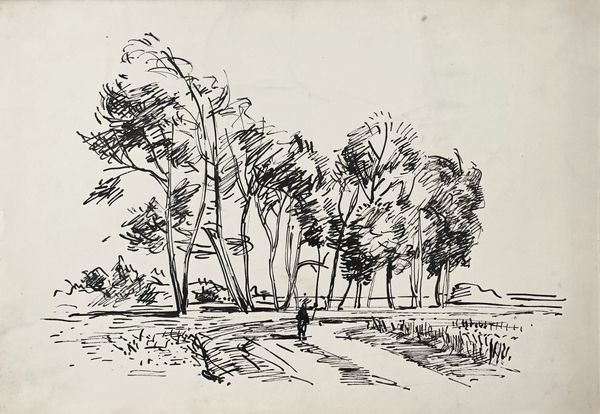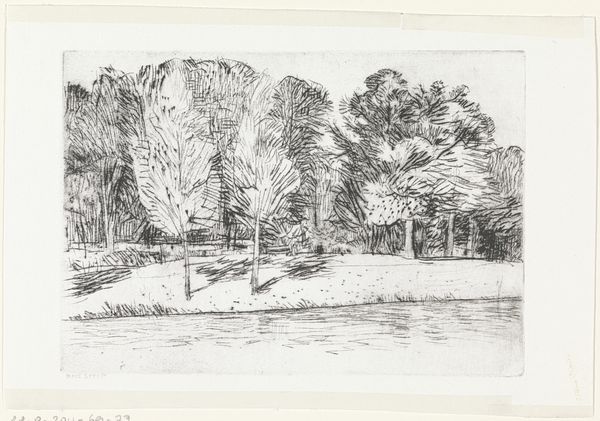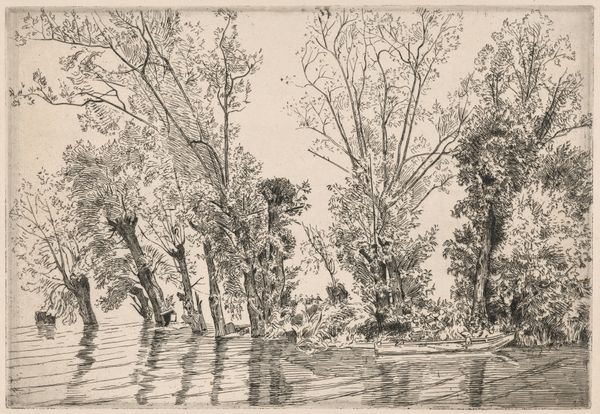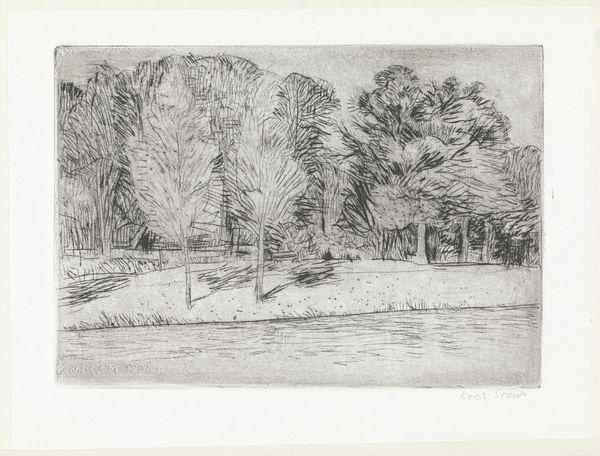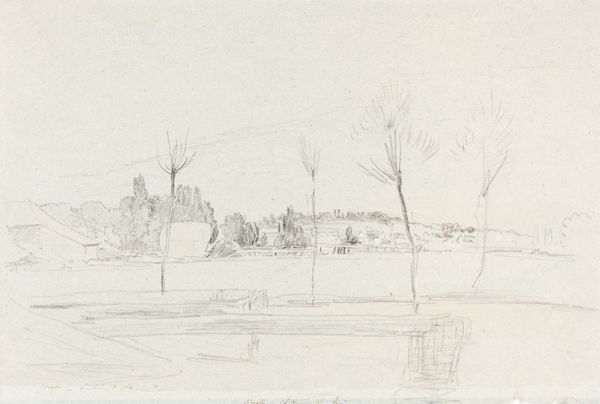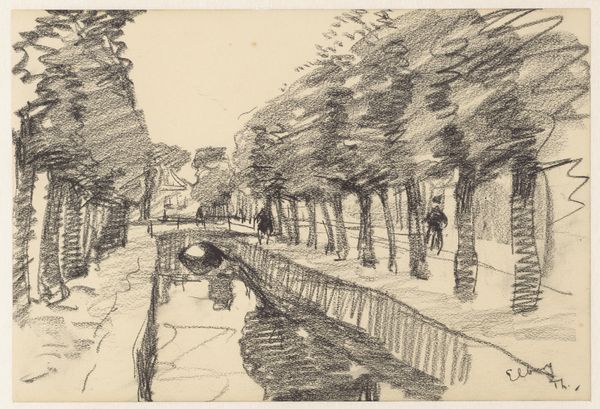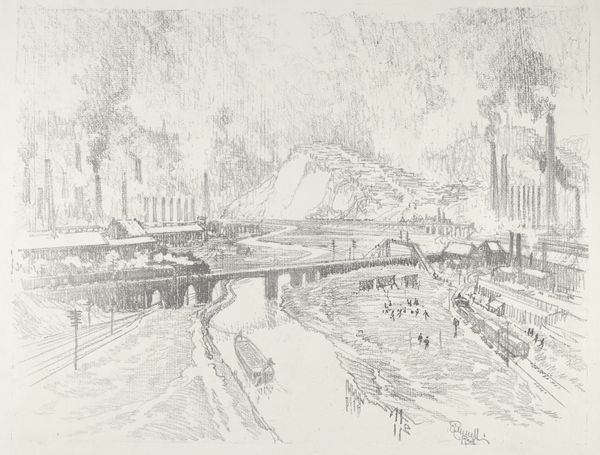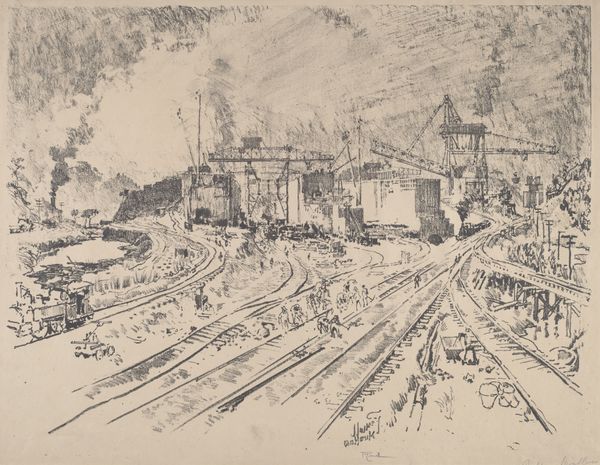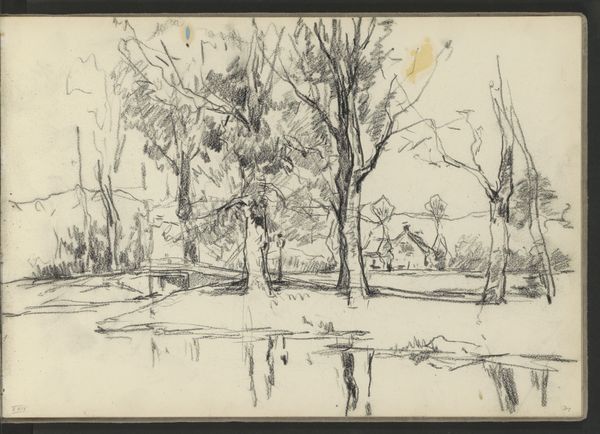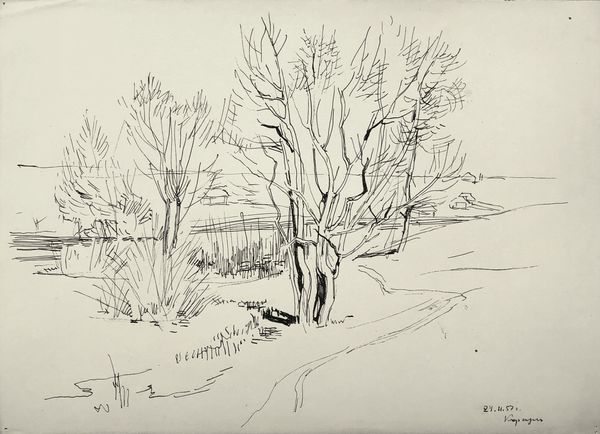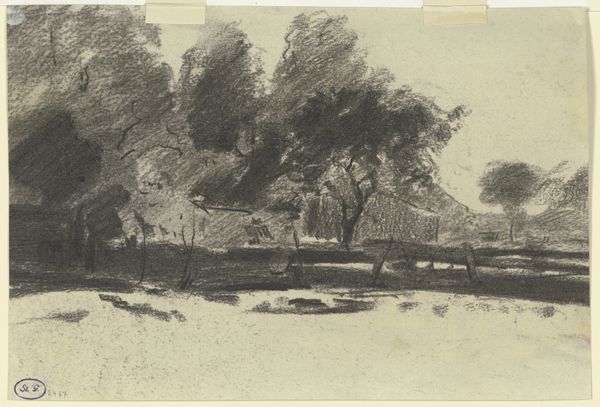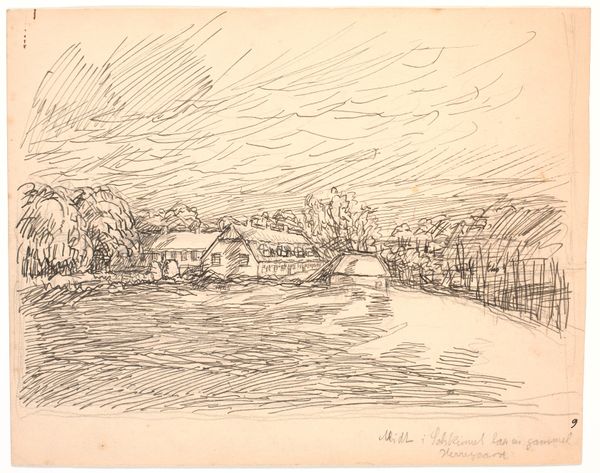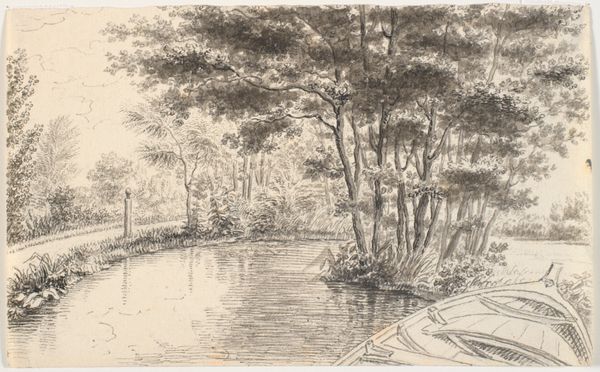
#
landscape illustration sketch
#
ink drawing
# print
#
pen sketch
#
incomplete sketchy
#
sketchwork
#
ink drawing experimentation
#
pen-ink sketch
#
pen work
#
fantasy sketch
#
initial sketch
Copyright: National Gallery of Art: CC0 1.0
Editor: We're looking at "The Canal at Blanzy, France," a print by Joseph Pennell from 1911. It’s a landscape with tall trees flanking a canal, but in the distance, there are smokestacks suggesting industrial activity. The contrast feels a bit unsettling. What do you see in this piece? Curator: That tension is exactly what grabs me. Pennell wasn't simply depicting a serene landscape; he was capturing a moment of profound societal shift. Blanzy was an industrial town. So the presence of those smokestacks is not incidental but integral to understanding the narrative. Editor: Narrative? Curator: Yes, think about the period, 1911. The world was on the cusp of enormous change: industrial expansion coupled with burgeoning environmental and social concerns. How does Pennell position these elements in relation to one another? Notice how the “natural” elements are fading and being overwhelmed by the factories? Editor: I see what you mean! The smokestacks seem to dominate the horizon despite being in the distance, casting a shadow on the rest of the landscape. Is he making a statement? Curator: Perhaps, about industrial encroachment? Or simply documenting the changing landscape? I wonder how a factory worker at the time would react versus the wealthy mine owner who has the potential for great profit and could escape to enjoy pure "nature." What does the scene say about class divides, privilege, and environmental exploitation? Whose story isn’t being told in this image? Editor: This really makes me consider the impact of industrialization on different communities, especially marginalized ones. Curator: Precisely. Art isn't created in a vacuum. It reflects, reinforces, and sometimes resists the power structures of its time. Editor: Thanks! I hadn't considered this picture in that broader context. It is so much more than just a landscape. Curator: And in examining those contexts, we can uncover richer, more nuanced readings of art – and of the world around us.
Comments
No comments
Be the first to comment and join the conversation on the ultimate creative platform.
